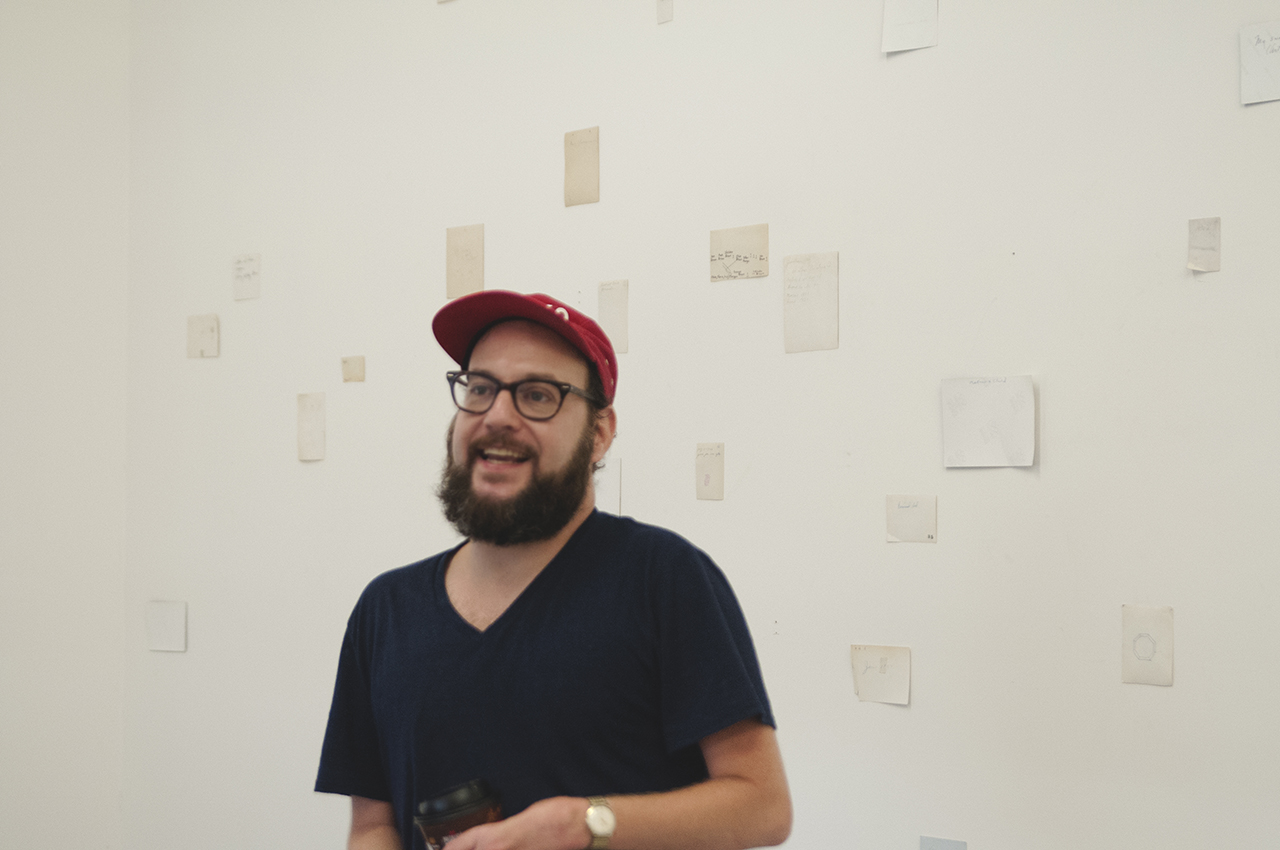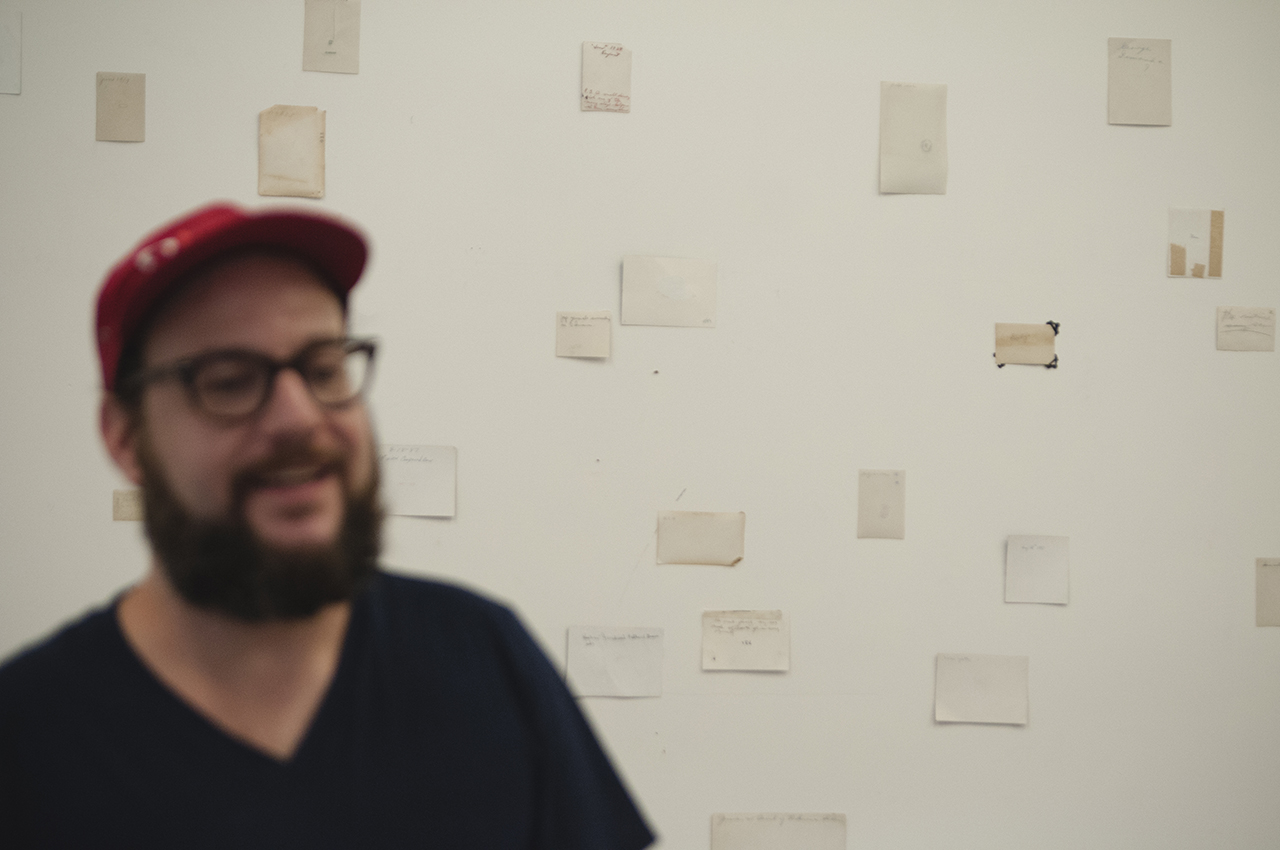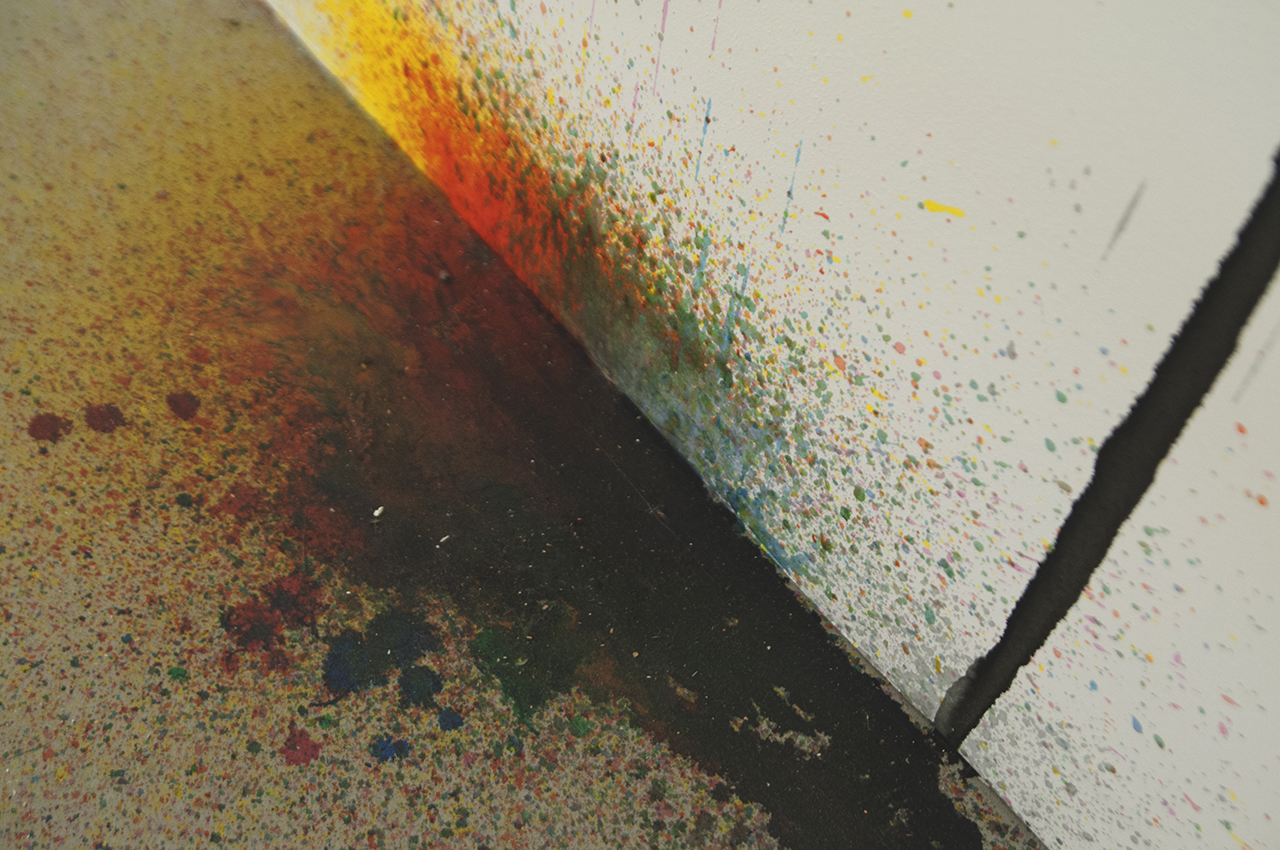Inside\Within is a constantly updating web archive devoted to physically exploring the creative spaces of Chicago's emerging and established artists.
Support for this project was provided by The Propeller Fund, a joint administrated grant from Threewalls and Gallery 400 at The University of Illinois at Chicago.

Search using the field below:
Or display posts from these tags:
3D printing 3D scanning 65 Grand 7/3 Split 8550 Ohio 96 ACRES A+D Gallery ACRE animation Art Institute of Chicago Arts Incubator Arts of Life audio blogging Brain Frame CAKE Carrie Secrist Gallery casting ceramics Chicago Artist Writers Chicago Artists Coalition Chicago Cultural Center Cleve Carney Art Gallery Clutch Gallery Cobalt Studio Coco River Fudge Street collage collection Columbia College Chicago Comfort Station comics conceptual art Contemporary Art Daily Corbett vs. Dempsey Creative Capital DCASE DePaul University design Devening Projects digital art Dock 6 Document drawing Duke University dye Elmhurst Art Museum EXPO Chicago Faber&Faber fashion fiber Field Museum film found objects GIF Graham Foundation graphic design Harold Washington College Hatch Hyde Park Art Center illustration Image File Press Imagists Important Projects ink installation International Museum of Surgical Science Iran Jane-Addams Hull House Museum jewelry Joan Flasch Artist's Book Collection Johalla Projects Julius Caesar Kavi Gupta Links Hall Lloyd Dobler LVL3 Mana Contemporary metalwork Millennium Park Minneapolis College of Art and Design Monique Meloche Museum of Contemporary Art Chicago (MCA) Museum of Contemporary Art Detroit (MOCAD) Museum of Contemporary Photography (MoCP) National Museum of Mexican Art (NMMA) National Resources Defense Council New Capital Northeastern Illinois University Northwestern University Ox-Bow painting paper mache Peanut Gallery peformance Peregrine Program performance photography PLHK poetry portraiture printmaking public art Public Collectors publications Renaissance Society risograph rituals Roman Susan Roots&Culture SAIC screen printing sculpture Sector 2337 Shane Campbell Silver Galleon Press Skowhegan Slow Smart Museum Soberscove Press social practice South of the Tracks Storefront SUB-MISSION Tan n' Loose Temporary Services Terrain Terrain Biennial text-based textile textiles The Banff Centre The Bindery Projects The Cultural Center The Franklin The Hills The Luminary The Packing Plant The Poetry Foundation The Poor Farm The School of the Art Institute of Chicago (SAIC) Threewalls Tracers Trinity College Trubble Club University of Chicago University of Illinois at Chicago (UIC) University of South Florida at Tampa Valerie Carberry Vermont Studio Center video weaving Western Exhibitions wood carving woodwork Yellow Book Yollocalli Arts Reach zinesInside\Within is produced in Chicago, IL.
Get in touch:
contactinsidewithin@gmail.com
Jason Lazarus: Image as Footnote

Jason uses image to build community around certain historical events and moments, often involving his subjects directly in the process of each of his ongoing projects. Understanding the social nature of photography, Jason has moved beyond pure documentation, layering his images with meaning that can either be digested or taken at face value. Looking outside the typical frame, Jason observes subjects from all angles, creating alternate ways of looking, even turning the picture to the wall to make the image something that can only be envisioned.
I\W: How does mining others’ images coincide with your own photographic eye?
JL: I think at a certain point in my practice I realized that cast-off material from the rest of the world had just as much value, if not more, than my own photographs. I decided that I am going to be the type of photographer who makes images and works with the vernacular. That’s kind of a literal and metaphorical strategy because I am very open to the sort of political, cultural, and historical paradigms that are shifting behind me or that I am a product of. Working with vernacular images makes me a much stronger photographer when I do choose to make images, and vice versa, this philosophy extends to my teaching as well.
This project (on the wall behind Jason) Recordings focuses on the text written on the back of found photographs. Working with this “snapshot-writing” is revelatory for thinking about personal and public archives, and the various strategies now used to “tag” images. I design these installations knowing the audience is intelligent and complex, and I only have to push over the first domino in order to create photographic experience(s). This project asks what happens if we don’t need to see these images anymore, but we just need to be asked to envision them, alone and in small groupings, woven into bigger constellations (installations) of non-linear narratives.
The project has a sentimental veneer that belies many meta ideas about photography, language, human vision, archives, and history-making. I think there there is a lot to learn from this material–it informs and contextualizes how text and image work with current image making, archiving, and broadcasting. For example, now more than ever I see current hashtags as performative—text-play enables identity-making and a fantasy space upon which to project ourselves…

I appreciate how you capture the gaze of the subject rather than the physical representation of who you are photographing (like “The top of the tree of gazed upon by Anne Frank while in hiding” or “Above Sigmund Freud’s couch“). Why do you use this sort of technique when making photographs?
I think history is filled with colonial powers and the colonized. Photography has been used abusively in those situations many times to colonize, to control mobile populations, and I think at a certain point I got healthily nervous about photography and its authorship. I started to do things like look at the frame, look outside of the frame, turn the photograph over, and think about the subject’s view–how to evoke (subject outside frame) rather than illustrate (subject inside frame). All my projects seek new ways of using photographic thinking to create alt-histories and bodies of knowledge.

How do you use image as a community builder or way to bring community together such as Phase 1?
Photography always has been incredibly social. You can look at the ritual of the carte de visite: in the mid 1800’s, a photographer would come and make your portrait but they would use a camera that was rigged so you could move the lens and produce 8 photos per photoshoot. It made photography really cheap, and it became a social calling card. Photography has many social histories, and I am interested in how I make my own practice visible in the larger flow of images. Instagram is very click and scroll, so as an artist I know most images are ending up in a muddy marsh while while the exceptional are going over Niagra Falls and creating a minor media moment. I am just as impatient as everyone else. I click and scroll and I swipe left, and so I think that is helpful to be also impatient and bratty when I am looking at images. My mission as an artist is creating other kinds of looking, a compulsion for slowing down and actually experiencing images. I often wonder how can the flow of images be pedagogical without being elitist?
Phase 1 is a great example because you don’t need a history of photography to come to a workshop and be asked what signs you respond to that have been used in real occupations. If you are being asked to contribute to a physical history of this digital (reportage) phenomenon, what sign would you want to make sure people saw? What aesthetics are you attracted to? As opposed to a Barbara Kruger which is a politically great example of pictures generation, pictures about pictures and pictures educating and lecturing the audience. With Phase 1, when someone spends 30-60 minutes making a sign, instead of looking at an image and walking by it they are actually engaged in literal, metaphorical, and semiotic sign making. Then the sign gets put up so other people can physically see, feel, and perpetuate a historical moment that I feel is so necessary for deep readings. Photography can be potent when it’s phenomenological—we can feel things first and then maybe understand them later.


Do you feel like your practice creeps into social practice?
From what I understand of social practice histories I feel like I make the best work when I am not thinking about social practice as a tidy set of techniques. My job is to be aware of all the histories that put me in a certain contemporary and social moment, but I think when I am making my job is to think less about those categories and think more about what are the problems with social practice, what are the problems with photography, etc. I think I make my best photographic work when I am impatient with photography or impatient with social practice or impatient with sculpture and I try to consolidate my needs and questions with my own idiosyncratic vision.
With Phase 1, when someone spends 30-60 minutes making a sign, instead of looking at an image and walking by it they are actually engaged in literal, metaphorical, and semiotic sign making. Then the sign gets put up so other people can physically see, feel, and perpetuate a historical moment that I feel is so necessary for deep readings. Photography can be potent when it’s phenomenological—we can feel things first and then maybe understand them later.
Can you explain your Untitled yellow canary photograph to me?
That is a very significant photograph to me and kind of opens up my practice in a special way. I made that image while Occupy Wall Street (fall 2011) was happening and I was away from home on a semester-long gig as a Kennedy Visiting Artist at the University of South Florida at Tampa (where I’m starting full-time in the fall of 2015). It’s a very inward image.
Living in Tampa at the time there were canaries at a flea market that I found and I had been thinking of canaries as iconic and poetic and after two years of thinking of what a nice photograph of a canary in a cage would make, I had the idea to release the canary in my house that I was renting at the time. The thing that you can’t see in the photo is that after five minutes of flying around the canary gets tired and sits and stares at you because they don’t have the muscle infrastructure or stamina when they are pets their whole lives to do any real flying. To me the canary photo is a document of Occupy, but it really isn’t important that anyone else understands that and it is maybe better that way.
My practice is the spectrum between Phase 1 and the canary photo and I love the sort of messiness of it, the insisting on a right for inward/outward making. Although it problematizes the recognition of my work at times, it asks more from viewers, and treats the multitudes they embody as sacred.
How does your project 95 Theses’ serve as photographic objects?
These are my answer to how do you philosophically photograph someone’s entire life—which is to say you can’t, but for me the dash between a birth and death date ontologically references life. Originally the project was conceived as a photography project, and then evolved to 3D recording, enlarging, and “printing” of these tiny negative spaces into 5’ granite floor sculptures.
My long term hope is that 95 Theses becomes a modular, mobile, site-specific public monument that activates and questions the context of the host-site. The human subjects of this project live on the edges of history and I am trying to pull them into a new conversation where their lives can be reconsidered anew.


What were your alternative motives for the Chicago Artist Group Portrait 2015 photograph beyond just documenting a specific moment in Chicago’s artist history?
I feel like there are so many things embedded in it. One of the things that is important to share about it is a couple of weeks before the shoot I was talking to one of my former students and I asked if she was going to come and she said, “No I’m not, I don’t feel like a Chicago artist.” She went to SAIC and is a year out—she is tremendously talented. When she shared this with me I immediately understood how she could not feel as a part of the community. She came here for the school, which is an instrumental way to come to a city, but maybe the work that you see when you come out of school isn’t necessarily local and your aspirations are national/international. Spending 5 or 6 years in an art community and thinking you don’t belong here was profoundly educational for me—how rapidly we can mentally feel included and discluded all the time as artists. Or how it is freeing to not think of yourself as a member of the local…I think a lot of people must feel like that. There are multiple thresholds and insecurities and stubbornness and loyalties that are always changing and so what I was excited about with the group photo was to invite multiple art worlds together and to see who might self-select from those worlds and show up. The visual result is tidy but I think the end implication is also really messy and fractured—the experience was violent and intimate at the same time. Many artists I care about are missing and will never appear in the image. At the same time, watching other people see their teachers or mentors or friends who they haven’t seen in years greet and hug, it reminded me that in 2015 it is really meaningful to have a bunch of people together, literal human bodies and to encounter people and to generate the heat of proximity. In a way that was nice for me because one of the questions I had for the project was what could I possibly learn from a group portrait? It is such a traditional photographic trope that I never really thought about much. The picture itself has sort of grand aspirations, but I don’t think of it as being in the main sentence. I think of it being a footnote and the actual photograph being generated in other ways.


